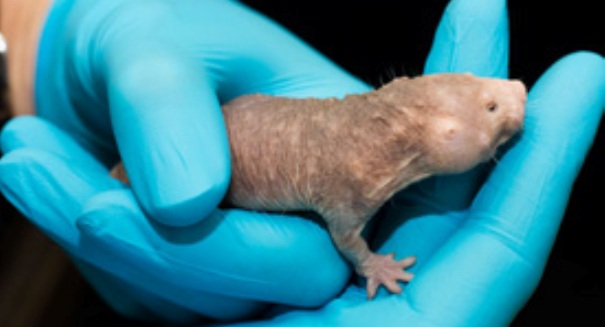
Biologists believe that they have found that answer to the naked mole rat's longevity: better-constructed proteins.
According to a news release from the University of Rochester, researchers may have discovered the secret to longevity for the world’s longest-living rodent: the mole rat.
Although they may look like a combination of all your worst nightmares as a child, naked mole rats can live for a very long time. In fact, they live for approximately 30 years, maintaining their health until their last day on this planet. Given our obsession with living longer lives, it would only make sense that researchers would want to study the naked mole rat to determine why it can live longer than any other rodent.
Biologists at the University of Rochester believe that they have found the answer to the naked mole rat’s longevity: better-constructed proteins.
According to scientists, proteins play a role in almost all functions of an animal cell, and thus, are vital to all organisms. In order to do their work properly, however, the proteins must fold into the right shapes that give them the ability to link to and interface with other structures in the cell. University of Rochester biologists believe that they have identified the process in naked mole rats that results in essentially perfect proteins.
“While this is basic research,” said Vera Gorbunova, “we hope our findings encourage further studies on better protein synthesis.”
The biologists concentrated their efforts on naked mole rat ribosomes. Gorbunova and her colleague, Andrei Seluanov, were occupied with ribosome RNA when they made a finding. After adding a dye to a sample, they examined it under ultraviolet light only to discover three dark bands (concentrations of various rRNA molecules) as opposed to the two bands that are typical of all other animals, implying that there is a “hidden break” in this particular rodent’s rRNA. Because rRNA is an important component of the protein-development mechanism, Gorbunova and Seluanov wanted to determine whether the broken rRNA impacts the quality of naked mole rat proteins.
According to the researchers, ribosome RNA strands behave as scaffolds on the ribosome, a protein synthesis machine. Altering the form of the scaffold can have a extensive impact on the organization of the ribosome components.
The biologists found that the naked mole rat’s rRNA scaffold is definitely unusual. The rRNA strands separate at two specific locations and get rid of the intervening piece. Instead of moving off on their own, the leftover pieces from each strand remain close to each other and behave as a scaffold on which ribosomal proteins are gathered to build a functional ribosome.
When the ribosome links amino acids together to develop a protein a mistake is occasionally brought in when an erroneous amino acid is added. The biologists discovered that the proteins built by naked mole rate cells are as much as 40 times less likely to have such mistakes than the proteins built by mouse cells.
“This is important because proteins with no aberrations help the body to function more efficiently,” noted Seluanov.
The study’s findings are described in the journal Proceedings of the National Academy of Sciences.

Leave a Reply